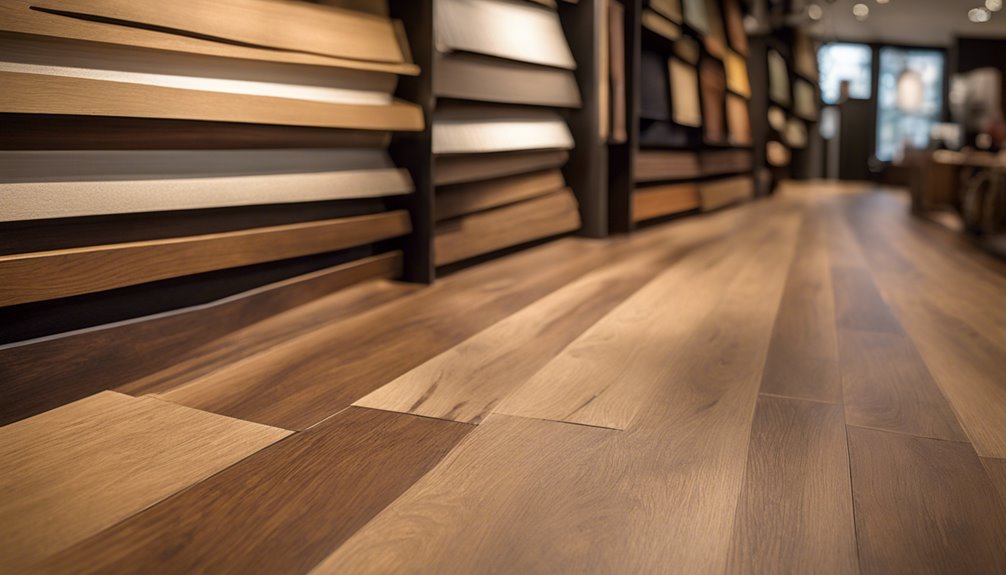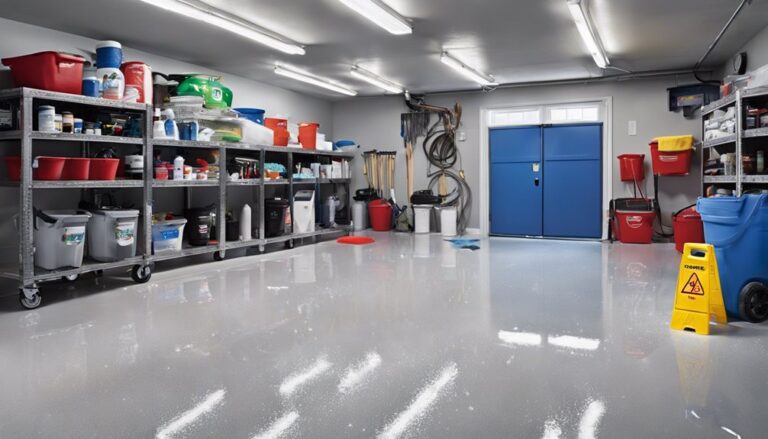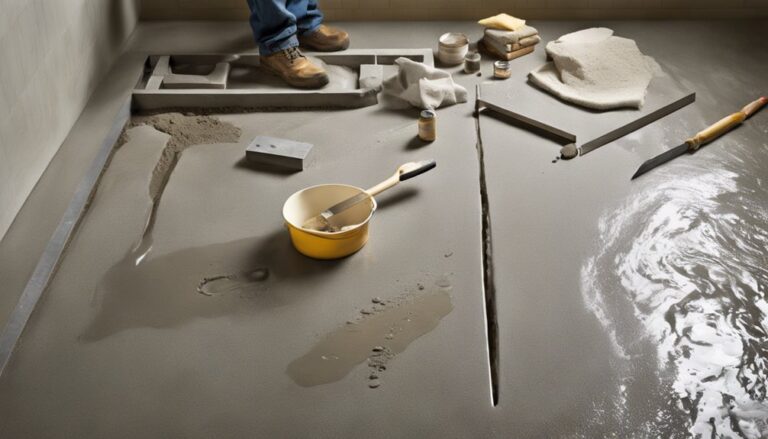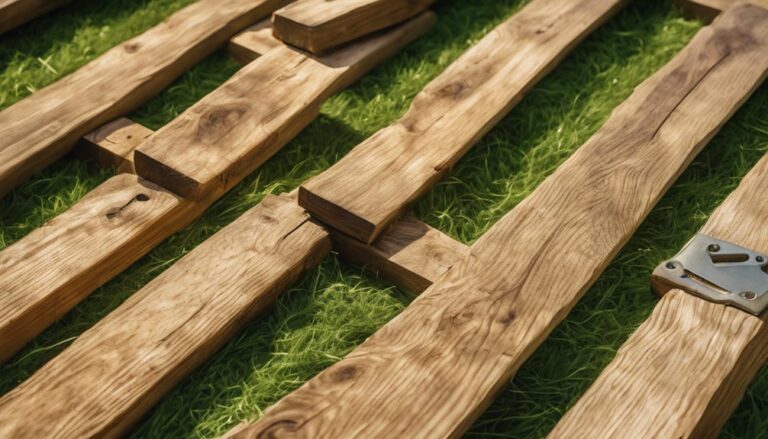When choosing hardwood flooring, start by understanding the different species, like oak for durability and exotic woods for unique aesthetics. Next, evaluate finish options—oil-based finishes enhance grain, while water-based is quick-drying and low in fumes. Consider how you'll install the flooring; each method, whether nail-down or floating, affects longevity and appearance. Assess the durability of various woods to match your lifestyle; for instance, hickory is great for busy households. Finally, set a budget that includes all costs. There's much more to explore in making a choice that suits your home perfectly.
Understand Hardwood Species
When you're choosing hardwood flooring, understanding hardwood species is essential, as it impacts not only the aesthetic appeal but also the durability and maintenance of your floors. Oak varieties, such as red and white oak, are popular for their strength and versatile looks. They're ideal if you want a classic, timeless feel. On the other hand, exotic species like Brazilian cherry or teak offer unique colors and grain patterns, providing a bold statement. These options can elevate your space, but they often come with higher maintenance and cost. So, consider your lifestyle and the look you want. Whether you prefer the familiarity of oak or the distinctiveness of exotic woods, knowing your options is key to making a wise choice.
Evaluate Finish Options
Although you might be focused on the species of hardwood, evaluating finish options is equally essential for achieving the desired look and longevity of your flooring. There are various finish types, including oil-based, water-based, and UV-cured finishes, each offering unique benefits. Oil-based finishes provide a rich, amber hue, enhancing natural grain patterns, while water-based options tend to dry faster and emit fewer fumes. Additionally, consider the color variations these finishes can create; a clear finish may preserve the original wood tone, while a tinted option can dramatically alter the aesthetic. Choosing the right finish not only enhances the beauty of your hardwood but also protects it from wear and tear, ensuring your investment stands the test of time.
Consider Installation Methods
Selecting the right finish for your hardwood flooring is just one part of the equation; the installation method you choose can greatly impact both the appearance and longevity of your floors. Here are some key installation techniques and subfloor considerations to keep in mind:
- Nail-Down Installation: Ideal for solid hardwood, this method guarantees a sturdy fit but requires a wooden subfloor.
- Glue-Down Installation: Perfect for engineered hardwood, it provides a strong bond and works well over concrete subfloors.
- Floating Installation: This technique allows for easy installation over various subfloors and is great for DIY enthusiasts.
Choosing the right installation method not only enhances the look but also maximizes your floors' durability. Be certain to assess your subfloor and select an installation technique that aligns with your flooring choice.
Assess Durability and Maintenance
While you may be drawn to the aesthetic appeal of hardwood flooring, it's important to also consider its durability and maintenance requirements. Different hardwoods offer varying levels of wear resistance, affecting how they'll hold up in your space. You'll want to choose a wood species that matches your lifestyle, especially if you have pets or children. Regular cleaning routines can extend the life of your flooring, so it's vital to know what's involved.
Here's a quick comparison of common hardwoods:
| Wood Type | Wear Resistance | Cleaning Routine |
|---|---|---|
| Oak | High | Sweep & damp mop |
| Maple | Medium | Vacuum & light mop |
| Cherry | Low | Regular dusting |
| Hickory | High | Sweep & dry mop |
| Birch | Medium | Vacuum & damp mop |
Choosing wisely guarantees your investment lasts.
Set Your Budget
Setting a budget for your hardwood flooring project is essential to guarantee you don't overspend or compromise on quality. By defining your financial limits early on, you can explore options that fit your needs. Here are three steps to help you set a realistic budget:
- Conduct a Cost Comparison: Research various hardwood types and their prices to understand what fits within your budget.
- Factor in Installation Costs: Don't forget to include labor or DIY expenses, as these can greatly affect your overall budget.
- Explore Financing Options: If needed, investigate financing plans or credit options that can ease the upfront costs without sacrificing quality.
Frequently Asked Questions
Can Hardwood Flooring Be Installed Over Existing Flooring?
Yes, hardwood flooring can be installed over existing flooring, but there're some installation considerations to keep in mind. You'll need to verify the existing floor's condition is suitable and that it won't interfere with the new flooring types' performance. It's crucial to check for moisture issues and height differences to avoid complications later. If done correctly, this method can save time and effort, giving you the freedom to refresh your space easily.
What Is the Best Way to Clean Hardwood Floors?
When it comes to cleaning hardwood floors, you've got to strike while the iron's hot. For effective cleaning methods, use a microfiber mop and a pH-balanced cleaner, avoiding excess water. Regular maintenance tips include sweeping or vacuuming to remove dirt and debris. Don't forget to apply a wood floor polish periodically to enhance shine and protect the finish. Keeping up with these practices guarantees your floors remain beautiful and last for years to come.
How Does Humidity Affect Hardwood Flooring?
Humidity levels can considerably impact your hardwood flooring. When humidity's high, wood absorbs moisture, leading to expansion and potential warping. Conversely, low humidity can cause shrinkage and gaps. To maintain your floor's integrity, you need effective moisture control. Investing in a humidifier or dehumidifier can help stabilize the environment, ensuring your hardwood remains beautiful and durable. By managing humidity, you'll protect your investment and enjoy the freedom of a stunning floor for years to come.
Are There Eco-Friendly Hardwood Flooring Options Available?
Yes, there are eco-friendly hardwood flooring options available that utilize sustainable materials. You can choose reclaimed wood, which not only reduces waste but also adds character to your space. These options help minimize environmental impact while providing durability and beauty. By opting for sustainable materials, you're making a conscious choice that supports responsible forestry practices. So, if you value freedom in your lifestyle, consider these eco-friendly alternatives for your flooring needs.
What Are the Common Mistakes When Installing Hardwood Floors?
When installing hardwood floors, avoid common installation errors that can ruin your results. Preparation's paramount—make certain the subfloor's clean, dry, and level. Failing to acclimate your flooring can lead to warping later. Don't underestimate the importance of expansion gaps, either; they can keep your floors looking fantastic and functioning freely. Finally, make sure you've got the right tools; using improper equipment can lead to frustrating failures. Take your time, and your floors will flourish!




